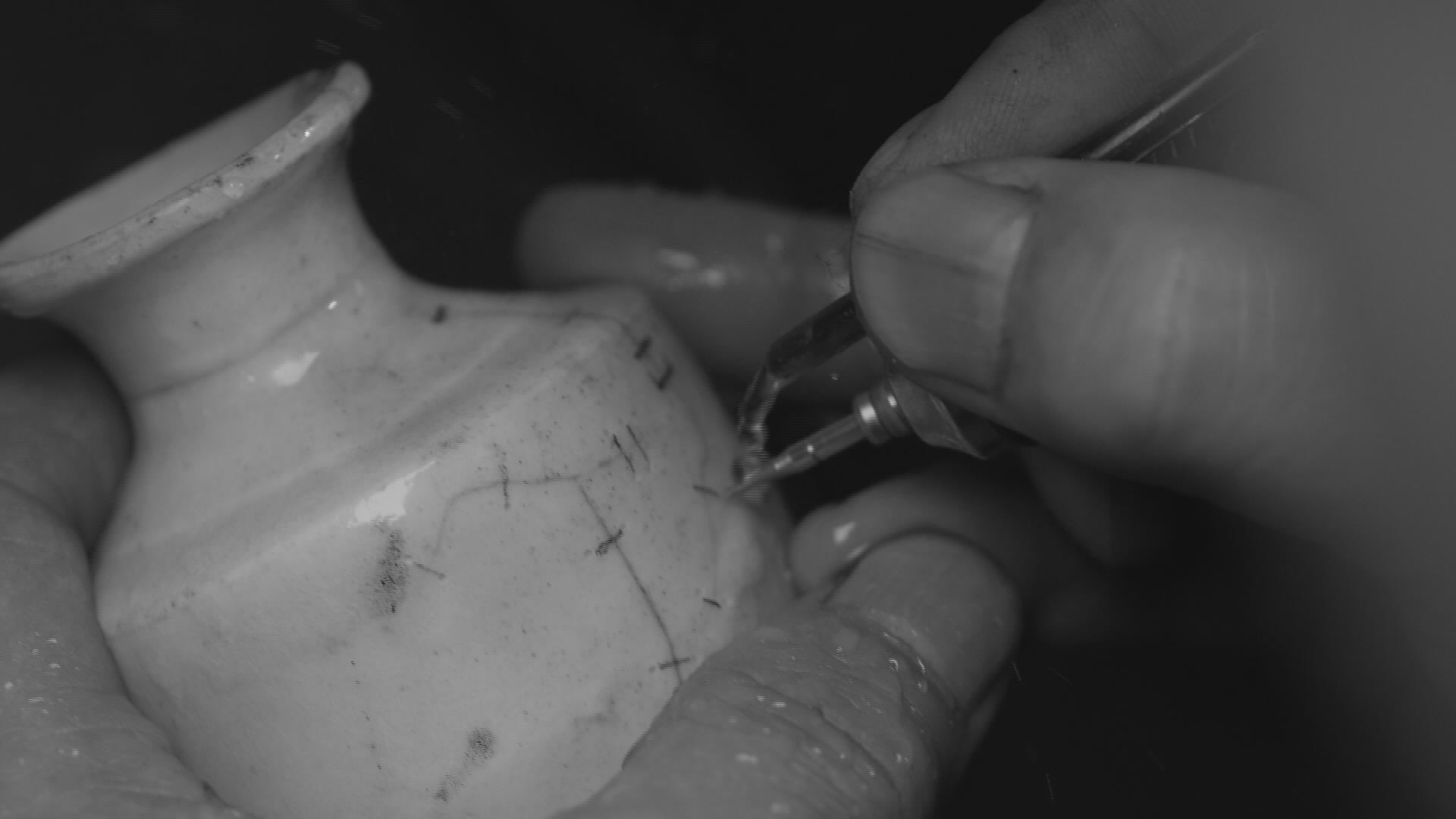
Culture
17:55, 07-Nov-2017
Chinese man reviving century-old crockery with ancient art
CGTN


CGTN
CGTN
China got its English name from being the home of china, usually glittering and translucent material that was once greatly appreciated as artwork.
But china can however, be quite fragile. So when broken, is it completely useless? Or could it be bestowed a second life with a sense of art?
Cao Qingli answers that question as an experienced craftsman.

Cao Qingli. /By CGTN
Cao Qingli. /By CGTN
Liuzhou city, south of China.
Located in the mountains is a teahouse called "Up On That Hill” and run by Cao.

"Up On That Hill", a tea house owned by Cao Qingli in Liuzhou city, south of China. /By CGTN
"Up On That Hill", a tea house owned by Cao Qingli in Liuzhou city, south of China. /By CGTN
Amidst the fragrance of tea, the crockery collection is displayed discreetly. Despite being covered in scars, the pieces show a different sense of charm and the beauty of imperfection.

CGTN Photo
CGTN Photo

CGTN Photo
CGTN Photo
The crockery were all broken when they arrived and required an ancient technique to mend them.
Broken crockery can be repaired with nails made of copper or iron. There's an old saying, "Never mend the crockery without the proper drill," that derived from this business. The craftsmen actually use the drill on the crockery, displaying their amazing skills.

CGTN Photo
CGTN Photo

CGTN Photo
CGTN Photo
In Cao's words, however, the ancient skill is "functionally extinct."
Since the 1980s, along with the development of technology, more and more cheap products have come on the market. Hence, the mending of crockery is no longer necessary.

CGTN Photo
CGTN Photo
Cao is not simply repairing earthenware. "In terms of the word 'handicraft', the skillful hands come first," he says. "But the craft is what we really want."

CGTN Photo
CGTN Photo

CGTN Photo
CGTN Photo
Cao sees the "craft" as an art. For him, mending is actually a kind of recreation. "When I mend a crockery, I'd feel the cracks," he says. "It always has its unique essence. I'd then work on it together with my own understandings."

CGTN Photo
CGTN Photo

CGTN Photo
CGTN Photo
Before his craftsman days, Cao was an entrepreneur for more than a decade. But he never thought it was what he really wanted. By chance, he met Wang Zhenhai, a mending master. Wang considers it as "saving lives and reviving the art." Cao was touched by the spirit of meticulousness. He determined that he would sell his company and learn mending skills as Wang's last apprentice.

CGTN Photo
CGTN Photo
Mending crockery seems a lonely occupation, but Cao enjoys it very much. He says, "Working with people often leads to misunderstandings of the world. But with crockery, there are no distractions."

CGTN Photo
CGTN Photo

CGTN Photo
CGTN Photo
He also enjoys the sheer ecstasy every time he finishes a piece of work, as well as the feeling of happiness he brings to others. "When I return the mended crockery, I can see how joyful they are. That happiness I can offer," Cao says with a contented look on his face.

CGTN Photo
CGTN Photo
Nowadays, Cao Qingli can earn his daily bread from his craftsmanship. He does the thing he likes while living the life he wants.

The story is one in "The 1.3 Billion" series exploring the diverse lives that make up China.
The story is one in "The 1.3 Billion" series exploring the diverse lives that make up China.

SITEMAP
Copyright © 2018 CGTN. Beijing ICP prepared NO.16065310-3
Copyright © 2018 CGTN. Beijing ICP prepared NO.16065310-3